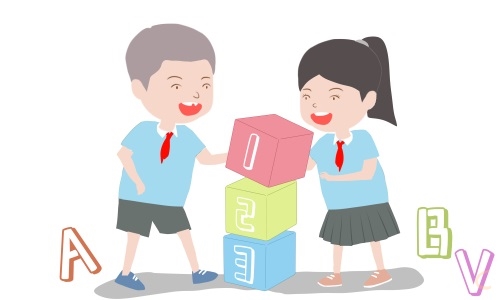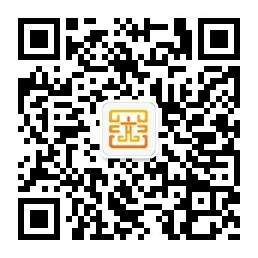冀教版四年级英语知识点5篇
相关文章
掌握课文词汇、句型、语音语调、语言结构和基本语法现象的基础上,还要进行知识的复习、反馈、检测及表达、书写、听写和言语技能技巧的使用和复习。下面是小编为大家精心整理的冀教四年级英语知识点,希望对大家有所帮助。

冀教版四年级英语知识点1
第一:单数的句子变成复数的句子
把单数的句子成复数的句子很简单:变法是把能变成复数的词变成复数,但a或an要把去掉。特殊疑问词、形容词、国家及地点通常不变。
把下列句子变成复数
1、I have a car we have cars
2、He is an American boy. They are American boys
3、It is a car They are cars
4、This is an eraser These are erasers
5、That is a backpsck Those are backpacks
6、I'm an English teather We are English teathers
7、It's a new shirt They are new shirts
8、He's a boy They are boys
9、She's a singer They are singers
10、What's this in English? What are these in English?
第二:就划线部分提问
就划线部分提问的变法:
1、先根据划线部分找到特殊疑问词。
2、 再把没划线的部分变成一般疑问句的语序。
3、 特殊疑问词通常有:what/ where/ who /whosc/ how/how old/ what colour/ what class /
what grade/what row/what school
第三:一般疑问句
1、一般疑问句最基本的变法:be 提前 用问号 读升调
2、my变成your our变成your I am / We are 变Are you I can 变Can you
3、注意人名不论放在什么位置都要大写 Tom is a student。Is Tom a student?
4、一般疑问句翻译成汉语都有"吗"?
1)This is my English teather. Is this your English teather?
2)It is our school. Is it your school?
3)We are students. Are you students?
4)I can sing. Can you sing?
第四:名词性物主代词和形容词性物主代词
1.名词性物主代词和形容词性物主代词一样有8个:Mine yours his hers its ours yours theirs
我的 你的 他的 她的 它的 我们的 你们的 他(她、它)们的
2. 名词性物主代词的特点:
1)译成汉语都有"的"
2)后面不加名词
3)名词性物主代词=形容词性物主代词+名词
the pen is mine 钢笔是我的(mine=my pen)
3.形容词性物主代词8个:
My your his her its our your their
我的 你的 他的 她的 它的 我们的 你们的 他(她、它)们的
4. 形容词性物主代词的特点:
1)译成汉语都有"的" my 我的 their 他们的
2)后面加名词: my backpack his name
3)前后不用冠词 a an the
例如:This is a my eraser
That is your a pen
It's his the pen
5. I(物主代词)my
you(物主代词)your
he (物主代词)his
he (物主代词)her
we (物主代词) our
注:在变物主代词时,把原题所给的词加上的,再译成单词就可以了。
冀教版四年级英语知识点2
module 1
短语
1. read a letter 读信
2. live in london 住在伦敦
3. on saturday 在星期天
4. a photo of me 一张我的照片
5. on my birthday 在我生日那天
6. a picture of zara and me一张我和zara的照片
7. at buckingham palace 在白金汉宫
8. write to me soon 尽快给我写信(见信速回)
9. tell me about china 给我讲讲有关中国的事
10. thank you for your letter 谢谢你的来信
11. happy birthday to you祝你生日快乐
12. in april在四月份
13. the weather in beijing 北京的天气
14. a photo of and me 一张我和lingling的照片
主要句型
1. where does she live? 她住在哪儿?
2. she lives in london. 她住在伦敦。
3. it was my birthday on saturday. 星期天是我的生日。(生日已过)
4. we were at buckingham palace. 我们在白金汉宫。
5. children from china are chinese. 来自中国的孩子是中国人。(歌曲中的歌词)
6. children from england are english. 来自英国的孩子是英国人。(歌曲中的歌词)
module 2
短语
1. clean my room打扫房间 clean-- cleaned
2. finish my homework完成作业 finish--finished
3. wash my trousers洗裤子 wash--washed
4. help my mum帮妈妈干活 help--helped
5. cook noodles下面条 cook--cooked
6. help him帮他忙 help-----helped
7. phone grandma给奶奶打电话 phone--phoned
8. watch tv看电视
9. paint a picture画画
10. play the flute吹笛子
11. play with me跟我玩
12. listen to music听音乐
主要句型
1.yesterday, i cleaned my room. 昨天,打扫了(我的)房间。
2. i washed my trousers. 我洗了裤子。
3. then i helped my mum. 然后,我帮妈妈干活了。
4. yesterday, mr. smart cooked noodles. 昨天,smart先生下了面条。
5. tom helped him. tom帮他忙。
6. ms. smart phoned grandma. smart老师给奶奶打电话。
7. sam watched tv. sam看电视。
8. amy painted a picture. amy画了一幅画。
module 3
短语
1. at half past six 在六点半
2. on mondays 在每个星期一
3. walk to school 步行上学
4. learn english and maths.学习英语和数学
5. learn these things学习这些东西
6. national day 国庆节
7. play with her toys玩她的玩具
8. on sundays在每个星期天
9. play football in the park在公园里踢足球
10. ride my bike骑自行车
11. stay at home呆在家里
主要句型
1. lingling didn’t get up at half past six. 玲玲没有在六点半起床。(昨天)
2. and she didn’t walk to school. 她也没步行上学。(昨天)
3. she didn’t learn english and maths.她没有学习英语和数学。(昨天)
4. on sundays, i usually play football in the park.星期天,我通常在公园踢足球。
5. but i didn’t play football yesterday. 但我昨天没有踢足球。
6. i usually ride my bike. 我通常骑自行车。(在每个周日)
7. i stayed at home.呆在家里。
冀教版四年级英语知识点3
1、一般疑问句:
英语中要用yes和no来回答的疑问句叫一般疑问句。如:
1)Isithot?Yes,itis.No,itisn’t.——be动词引导
2)Isitacar?Yes,itis.No,itisn’t.——be动词引导
3)Isthisyourruler?Yes,itis.No,itisn’t.——be动词引导
4)Doyoulikebananas?——含实义动词
Yes,Ilikebananas.No,Idon’tlikebananas.或Yes,Ido.No,Idon’t
5)CanTomseeadogl?——含情态动词
Yes,Tomcanseeadog.No,Tomcan’tseeadog.或Yes,hecan.No,hecan’t
.陈述句(肯定句,否定句,一般疑问句)的转变规律:
1.肯定句:2.否定句:3.一般疑问句及肯否定回答
1)主语+be动词+….1)主语+be动词+not+….1)be动词+主语+…?
Yes,主语+be动词./No,主语+be动词+not.
Iamateacher. Iamnotateacher.Areyouateacher?
--Yes,Iam./No,Iamnot.
Mymotheristhin. Mymotherisnot/isn’tthin.Isyourmotherthin?
--Yes,sheis./No,sheisn’t.
Theyarefriend. Theyarenot/aren’tfriend.Aretheyfriend?
--Yes.theyare./No,theyaren’t.
2)主语+情态动词can+…2)主语+情态动词can+not+….2)情态动词can+主语+…?
Yes,主语+情态动词can/No,主语+情态动词can+not
Hecanjump. Hecannot/can’tjump.Canhejump?
--Yes,hecan./No,hecan’t.
3)助动词do/does+主语+….动词原形+….动词原形?
Yes,主语+助动词do/does.No,主语+助动词do/does+not.
Helikestoeatapples. Hedoesn’tliketoeatapples. Doesheliketoeatapples?
Yes,hedoes./No,hedoesn’t.
2、.祈使句:表示请求、命令、建议或劝告等的句子叫祈使句,主语you常省略。
1)、肯定形式:一般以动词原形开头。Openthedoor,please.
2)、否定形式:在句首谓语动词前加Don‘t。Don‘tbelateforclass.
3、特殊疑问句
用特殊疑问词来提出问题的疑问句叫作特殊疑问句。特殊疑问词一般要放在句首。常用的疑问词有what、who,which、how等这些词都以wh开头(包括how)所以也叫作wh-question。特殊疑问句要求回答具体内容。不能用yes或no回答。结构:疑问词+一般疑问句。回答不能用yes/no(或相当于yes/no)回答的问句。答句的句式同肯定句句式:如:
Whatcanyousee? Icanseeacat.
Whatdoyoulike? Ilikeplayingfootball
Howoldareyou? I’mten.
3.总结:Be的用法口诀
I用am;you、we、they都用are;is连着he,she,it;
单数名词用is,复数名词全用are。
变疑问,往前提,句末问号莫丢弃。
变否定,更容易,be后not莫忘记。
疑问否定任你变,句首大写莫迟疑。
冀教版四年级英语知识点4
定冠词the与指示代词this,that,these,those同源,有“那(这)个” “这(那)些”的意思,但较弱,可以和一个名词连用,来表示某个或某些特定的人或东西。以下为必须加定冠词的情形:
(1)在表示双方都明白的人或物的名词之前:
take the medicine. 把药吃了。
(2)在上文提到过的人或事的名称之前:
he bought a house. i‘ve been to the house.
他买了幢房子。我去过那幢房子。
(3)在指世上独一无二的事物的名词之前:
the sun, the sky, the moon, the earth
(4)与单数名词连用表示一类事物,如:
the fox is cunning .狐狸是狡猾的。
(5)与形容词或分词连用,表示一类人:the rich 富人; the living 生者。
(6)用在序数词和形容词级,及形容词only, very, same等前面:
where do you live? i live on the second floor.你住在哪?我住在二层。
that‘s the very thing that ineed那正是我需要的东西。
(7)在表示“…世纪…年代”的结构之前
he began to learn russian in the 1950s. 他在20实际50年代开始学俄语 .
但注意:in one‘s 50s意为“在某人五十多岁时”.如:
he looked quite healthy though he was in his 80s.
(8)在比较级的两种句型中: ①表示“越 ……,就越……”时。如:
the lighter, the better. 越轻越好 .
② 表示“两者中比较……”时,用定冠词。如:
there are two books on the table. i like the thicker one.
(9)用在“动词+sb.+介词+the+身体部位名称”的结构中(注意:介词常用in/on/by)。如:
the ball hit me on the back. 球打中了他的头 .
(10) 在表示“计量单位”的可数名词前(注意:介词用by)。如:
the workers are paid by the hour/day/month. 按月付给工人工资 .
(11)用在某些由普通名词构成的专有名词前:the great wall(长城),the people‘s park(人民公园)等。
the people‘s republic of china中华人民共和国
the united states美国
冀教版四年级英语知识点5
学英语的口诀
动词为纲滚雪球,难易编组抓循环
同类归纳印象深,图示介词最直观
混淆多因形音义,反义词语成对念
构词方法不可忘,习惯用语集中练
词不离句法,课外阅读莫间断
e的用法口诀
我用am,你用are,is连着他,她,它;
单数名词用is,复数名词全用are.
变疑问,往前提,句末问号莫丢弃
变否定,更容易,be后not莫忘记
疑问否定任你变,句首大写莫迟疑
时间名词前所用介词的速记歌
年月周前要用in,日子前面却不行
遇到几号要用on,上午下午又是in.
要说某日上下午,用on换in才能行
午夜黄昏须用at,黎明用它也不错
at也用在明分前,说差可要用上to,
说过只可使用past,多说多练牢牢记,
莫让岁月空蹉跎!


